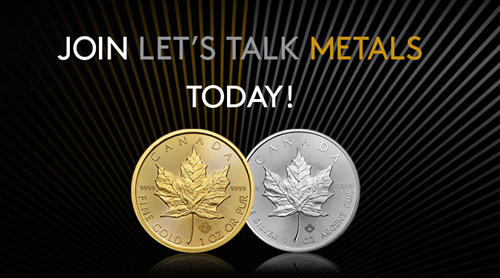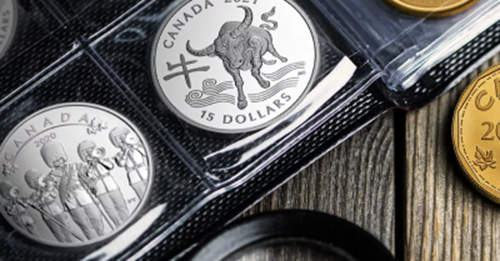How Platinum Recycling Supports a Circular Economy
- Apr 27, 2025
- lovePLATINUM
- 5 minute read
The information contained in this article is current as of the date of publishing.
Reducing waste is an important strategy in society’s efforts to protect the environment and minimize its overall carbon footprint. That’s what makes materials like platinum and other platinum group metals (PGMs) so important. These metals are highly recyclable and can be repurposed many times, making them vital contributors to the circular economy.
In this blog, we’ll look at how platinum is used and reused, and how platinum recycling can inspire greater recycling of other critical metals.


The information contained in this article is current as of the date of publishing.
Reducing waste is an important strategy in society’s efforts to protect the environment and minimize its overall carbon footprint. That’s what makes materials like platinum and other platinum group metals (PGMs) so important. These metals are highly recyclable and can be repurposed many times, making them vital contributors to the circular economy.
In this blog, we’ll look at how platinum is used and reused, and how platinum recycling can inspire greater recycling of other critical metals.
HOW IS PLATINUM USED?
Platinum is highly ductile, making it suitable for a wide range of applications.[1] It’s also the least reactive metal known to exist, which makes it largely impervious to rusting, corroding and tarnishing.[2],[3] It is non-porous and biocompatible, so it resists bacteria growth and typically does not cause any allergic reaction in humans.[4] Platinum also has an extremely high melting point and is highly electroconductive, making it ideal for industrial applications many other metals can’t tolerate.[5]
These characteristics make platinum and PGMs ideal for many uses — in some cases, platinum is the only appropriate material. Some of those uses include:
Glassmaking
Glassmaking involves temperatures as high as 1,700˚C, making platinum (with its melting point of 1,768˚C) one of the few materials that can be used to line and coat glass manufacturing equipment such as moulds and stirrers. [8]
Jewellery
Platinum’s colour, durability and purity make it a popular choice for jewellery, particularly for certain types of stone settings.[9]
Transportation
Platinum and other PGMs are critical catalysts in the proton exchange membrane technology used in electrolysers and hydrogen fuel cells — a growing segment of electric vehicle development. [10]
RECYCLING PLATINUM FOR THE CIRCULAR ECONOMY
- Recycled PGMs make up about 25% of the total annual supply, and around 80% of that comes from the automotive industry.[11]
- PGMs are used extensively in autocatalysts, devices that convert harmful emissions from internal combustion engines into carbon dioxide, water and nitrogen.[12]
- More than 90% of the platinum used to make these autocatalysts is typically recovered once the device or vehicle reaches the end of its life.[13]
- Platinum used in jewellery and other industrial applications can also be recycled, often within a closed-loop system (that is, one that recycles materials directly back into its own processes, often with little or no need for additional inputs).[14]
While the high recyclability of platinum makes it attractive for the circular economy, traditional methods of extracting and processing platinum for reuse involve burning scrap metal at temperatures above 1,500˚C, which demands significant resources and produces toxins with their own environmental and health impacts.[15] However, newer methods, such as one developed by researchers at the University of Southern Denmark, offer more environmentally friendly ways to recycle platinum. This method uses an electrochemical reaction to more gently separate platinum from other scrap metals, producing fewer emissions and preserving other valuable elements of the scrap metal while recovering more than 95% of the platinum.[16]
But the effects of platinum recycling can extend beyond the platinum itself. Currently, PGMs are recycled at significantly higher rates than many other critical metals used in renewable technologies, such as lithium, nickel, cobalt and manganese.[17] The World Economic Forum suggests that lessons from platinum recycling — including the value of open circular economies, effective collection and support for recycling as a service — could be applied to other metals to improve their recyclability and contribute to the global circular economy.[18]
THE MINT’S COMMITMENT TO SUSTAINABILITY
Improving the circularity of materials is one piece of a larger sustainability puzzle. At the Royal Canadian Mint, we are committed to investing in solutions that lower our carbon footprint, reduce water use and waste, and minimize our environmental impact. We support Canada’s adoption of the United Nations 2030 agenda for sustainable development, and have formalized our goals in this area through our ESG Commitment and Action Plan. For advice on how you can build a sustainable investment portfolio, reach out to your financial advisor.

Important information and disclosures
© 2025 Royal Canadian Mint. All rights reserved.
Some links to websites and references to documents provided are available in English only and are owned or operated by third parties. By accessing a third-party website and/or document you understand that they are independent from the Royal Canadian Mint (the “Mint”) and that the Mint has no control over the content of such third-party websites and cannot assume any responsibility for materials created or published by such third-party websites. In addition, a link to a third-party’s website or document does not imply that the Mint endorses the website, the data, information and/or the content of such website. It is your responsibility to ensure that you review and agree to terms and conditions applicable to such websites before using it. Please note that the Mint is not responsible for webcasting or any other form of transmission received from any linked website.
The information provided herein is intended for informational purposes only and is not intended to constitute investment, financial, legal, tax or accounting advice, and you should not rely on the information herein for such advice. Past performance, and historical trends are not indicative of future results. Many factors unknown to the Mint may affect the applicability of any statement or comment made herein to your particular circumstances, and this information does not take into account any investment objectives, financial situation or particular needs of any particular person. You should directly consult your financial professional or other advisors before acting on any information herein. The information and materials herein are provided with the understanding that the Mint is not acting in a fiduciary capacity. Nothing contained herein constitutes a solicitation, recommendation or offer for the purchase or sale of products or services of any kind whatsoever. Diversification does not guarantee any investment returns and does not eliminate the risk of loss.
The information provided herein may contain forward-looking statements which are based on current expectations and are subject to change. Forward-looking statements involve significant known and unknown risks, uncertainties and assumptions. A number of factors could cause actual results, performance or achievements to be materially different from any future results, performance or achievements that may be expressed or implied by such forward-looking statements. These statements are not guarantees of future performance and should not be relied upon as such. The Mint assumes no responsibility for updating any information, including forward-looking statements, contained herein.
Mint does not guarantee the accuracy or completeness of any information contained herein, nor does the Mint accept responsibility for any losses or damages arising directly or indirectly from the use of or reliance on this information.
Reproduction or redistribution of any of this information is expressly prohibited without the prior written consent of the Mint.
Any person accessing this information should also consult the Mint’s website Terms of Use | The Royal Canadian Mint.
[1] World Platinum Investment Council, A Coat of Platinum.
[2] World Platinum Investment Council, Platinum Facts.
[3] [4] [5] [6] World Platinum Investment Council, A Coat of Platinum.
[7] World Platinum Investment Council, Platinum Facts.
[8] World Platinum Investment Council, In a Glass of its Own.
[9] Maple Leaf Diamonds, Precious Metals.
[10] World Platinum Investment Council, Hydrogen Demand.
[11] CME Group, Platinum Recycling and the Circular Economy.
[12] World Platinum Investment Council, Platinum Group Metals in Autocatalysts.
[13] [14] CME Group, Platinum Recycling and the Circular Economy.
[15] [16]University of Southern Denmark, 95% of Platinum Can Be Recycled with New Method.
[17] [18] World Economic Forum, Circularity of Critical Metals in the Energy Transition: What We Can Learn from Platinum Group Metals.


Let's Talk Bullion
Let's Talk Bullion
Explore more articles and videos related to precious metals and get answers to questions about gold, silver and platinum bullion.



